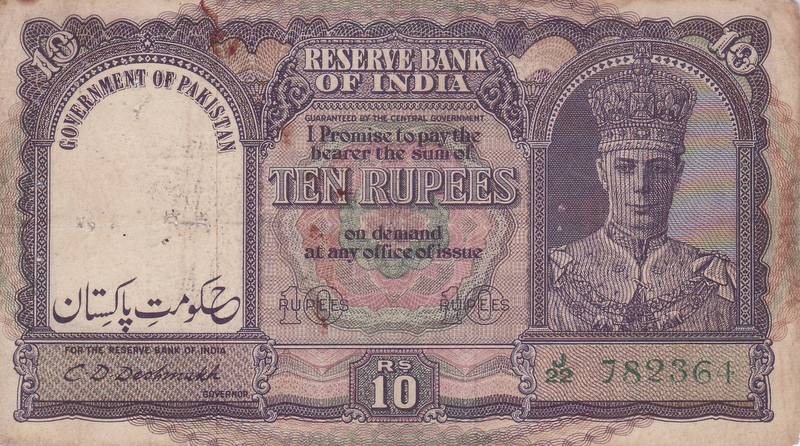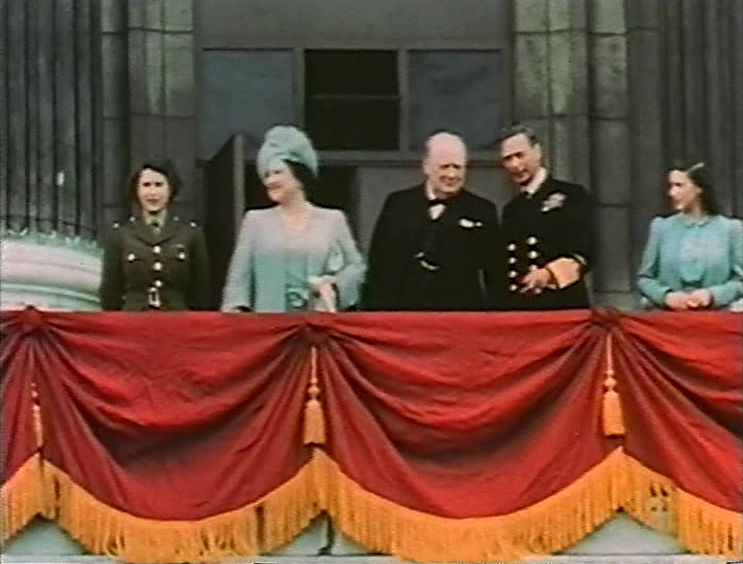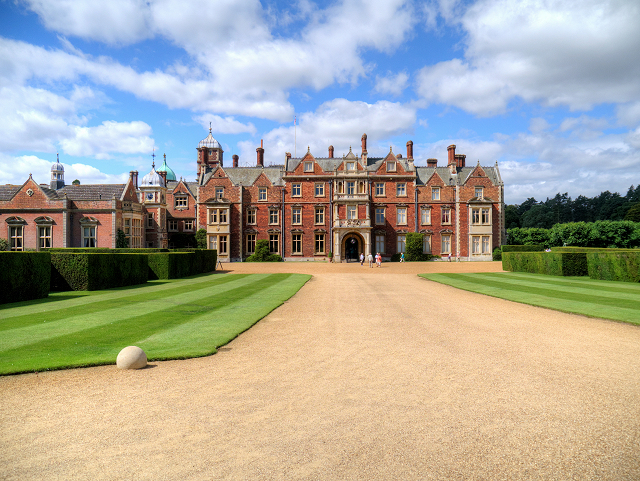|
1952 In Pakistan
Events from the year 1952 in Pakistan. Incumbents Monarch * King George VI (consort – Queen Elizabeth) until February 6 * Queen Elizabeth II (consort – Prince Philip) from February 6 Federal government * Governor-General – Malik Ghulam Muhammad * Prime Minister – Khawaja Nazimuddin * Chief Justice: Abdul Rashid Governors * Governor of Northwest Frontier: Khwaja Shahabuddin * Governor of West Punjab: Abdur Rab Nishtar * Governor of Sindh: Mian Aminuddin Events January–March * January 26 – At the Dhaka session of the ruling Muslim League party, prime minister Khawaja Nazimuddin declares Urdu the national language of the state of Pakistan. * January 30 – The Awami League holds a secret meeting, attended by a number of members from the communist front mobilising full political and student support. * February 6- George VI, King of Pakistan, dies at Sandringham House aged 56. Queen Elizabeth II becomes Queen of Pakistan * February 20 – Section 144 of the C ... [...More Info...] [...Related Items...] OR: [Wikipedia] [Google] [Baidu] |
George VI
George VI (Albert Frederick Arthur George; 14 December 1895 – 6 February 1952) was King of the United Kingdom and the Dominions of the British Commonwealth from 11 December 1936 until his death in 1952. He was also the last Emperor of India from 1936 until the British Raj was dissolved in August 1947, and the first Head of the Commonwealth following the London Declaration of 1949. The future George VI was born in the reign of his great-grandmother Queen Victoria; he was named Albert at birth after his great-grandfather Albert, Prince Consort, and was known as "Bertie" to his family and close friends. His father ascended the throne as George V in 1910. As the second son of the king, Albert was not expected to inherit the throne. He spent his early life in the shadow of his elder brother, Prince Edward, the heir apparent. Albert attended naval college as a teenager and served in the Royal Navy and Royal Air Force during the First World War. In 1920, he was made ... [...More Info...] [...Related Items...] OR: [Wikipedia] [Google] [Baidu] |
Muslim League (Pakistan)
bn, মুসলিম লীগ , logo = Flag of the Pakistan Muslim League (Q).svg , leader1_title = Historical leaders , leader1_name = M. A. Jinnah Liaquat A. Khan Ch. Khaliquzzaman Khwaja NazimuddinFatima Jinnah , leader2_title = Parliamentary Secretary , leader2_name = Mahmud Husain , foundation = 15 December 1947 , dissolved = 27 October 1958 , predecessor = All-India Muslim League , successor = Pakistan Muslim League All Pakistan Awami Muslim League , ideology = Islamic ModernismCapitalism Islamic socialism (factions) , position = Big tent , international = , headquarters = Karachi , newspaper = Dawn , colors = Green , country = Pakistan , website = , colorcode = #006600 The Muslim League was the original successor of the All-India Muslim League that led the Pakistan Movement to achieve an independent nation. Five of the country's Prime Ministers have been affiliate ... [...More Info...] [...Related Items...] OR: [Wikipedia] [Google] [Baidu] |
Basic Principles Committee
The Basic Principles Committee (BPC) was a specialized committee set up in March 1949 by Khawaja Nazimuddin on the advice of prime minister Liaquat Ali Khan. The committee's sole purpose was to determine the basic underlying principles that would determine future constitutions and legislature in Pakistan. Initial recommendations and proposals suggested by the BPC were strongly criticized in the local media and the public. Much of the criticism came from East Pakistan where the committee proposals were said to be subversive of the ideology of Pakistan, under-representing the majority province and neglecting the Bengali language thoroughly in the constitutional and legislative process. The suggestion of the formation of a religious oversight board was also seen as "''undemocratic ndan insult to Islam''". Formation Before the first constituent assembly of Pakistan could formulate any constitution or legislature, it was necessary to put in order the basic principles that would deter ... [...More Info...] [...Related Items...] OR: [Wikipedia] [Google] [Baidu] |
Karachi
Karachi (; ur, ; ; ) is the most populous city in Pakistan and 12th most populous city in the world, with a population of over 20 million. It is situated at the southern tip of the country along the Arabian Sea coast. It is the former capital of Pakistan and capital of the province of Sindh. Ranked as a beta-global city, it is Pakistan's premier industrial and financial centre, with an estimated GDP of over $200 billion ( PPP) . Karachi paid $9billion (25% of whole country) as tax during fiscal year July 2021 to May 2022 according to FBR report. Karachi is Pakistan's most cosmopolitan city, linguistically, ethnically, and religiously diverse, as well as one of Pakistan's most secular and socially liberal cities. Karachi serves as a transport hub, and contains Pakistan’s two largest seaports, the Port of Karachi and Port Qasim, as well as Pakistan's busiest airport, Jinnah International Airport. Karachi is also a media center, home to news channels, film and f ... [...More Info...] [...Related Items...] OR: [Wikipedia] [Google] [Baidu] |
Bengali People
Bengalis (singular Bengali bn, বাঙ্গালী/বাঙালি ), also rendered as Bangalee or the Bengali people, are an Indo-Aryan peoples, Indo-Aryan ethnolinguistic group originating from and culturally affiliated with the Bengal region of South Asia. The current population is divided between the independent country Bangladesh and the Indian states of West Bengal, Tripura and parts of Assam, Meghalaya and Manipur. Most of them speak Bengali language, Bengali, a language from the Indo-Aryan languages, Indo-Aryan language family. Bengalis are the List of contemporary ethnic groups, third-largest ethnic group in the world, after the Han Chinese and Arabs. Thus, they are the largest ethnic group within the Indo-Europeans and the largest ethnic group in South Asia. Apart from Bangladesh and the Indian states of West Bengal, Tripura, Manipur, and Assam's Barak Valley, Bengali-majority populations also reside in India's union territory of Andaman and Nicobar Islan ... [...More Info...] [...Related Items...] OR: [Wikipedia] [Google] [Baidu] |
East Pakistan
East Pakistan was a Pakistani province established in 1955 by the One Unit Scheme, One Unit Policy, renaming the province as such from East Bengal, which, in modern times, is split between India and Bangladesh. Its land borders were with India and Myanmar, with a coastline on the Bay of Bengal. East Pakistanis were popularly known as "Pakistani Bengalis"; to distinguish this region from India's state West Bengal (which is also known as "Indian Bengal"), East Pakistan was known as "Pakistani Bengal". In 1971, East Pakistan became the newly independent state Bangladesh, which means "country of Bengal" in Bengali. East Pakistan was renamed from East Bengal by the One Unit Scheme of Pakistani Prime Minister Mohammad Ali of Bogra. The Constitution of Pakistan of 1956 replaced the Pakistani monarchy with an Islamic republic. Bengali politician H. S. Suhrawardy served as the Prime Minister of Pakistan between 1956 and 1957 and a Bengali bureaucrat Iskander Mirza became the first Presid ... [...More Info...] [...Related Items...] OR: [Wikipedia] [Google] [Baidu] |
Queen Of Pakistan
From 1947 to 1956, the Dominion of Pakistan was a self-governing country within the Commonwealth of Nations that shared a monarch with the United Kingdom and the other Dominions of the Commonwealth. The monarch's constitutional roles in Pakistan were mostly delegated to a vice-regal representative, the governor-general of Pakistan. The Pakistani monarchy was created by the Indian Independence Act 1947, which divided British India into two independent sovereign states of India and Pakistan. The monarchy was abolished on 23 March 1956, when Pakistan became a republic within the Commonwealth with a president as its head of state. History Reign of George VI (1947–1952) Under the Indian Independence Act 1947, British India was to be divided into the independent sovereign states of India and Pakistan. From 1947 to 1952, King George VI was the sovereign of Pakistan, with Pakistan sharing the sovereign with the United Kingdom and the other Dominions of the Commonwealth of Nation ... [...More Info...] [...Related Items...] OR: [Wikipedia] [Google] [Baidu] |
Queen Elizabeth II
Elizabeth II (Elizabeth Alexandra Mary; 21 April 1926 – 8 September 2022) was Queen of the United Kingdom and other Commonwealth realms from 6 February 1952 until her death in 2022. She was queen regnant of 32 sovereign states during her lifetime, and was head of state of 15 realms at the time of her death. Her reign of 70 years and 214 days was the longest of any British monarch and the longest verified reign of any female monarch in history. Elizabeth was born in Mayfair, London, as the first child of the Duke and Duchess of York (later King George VI and Queen Elizabeth The Queen Mother). Her father acceded to the throne in 1936 upon the abdication of his brother Edward VIII, making the ten-year-old Princess Elizabeth the heir presumptive. She was educated privately at home and began to undertake public duties during the Second World War, serving in the Auxiliary Territorial Service. In November 1947, she married Philip Mountbatten, a former prince of Gr ... [...More Info...] [...Related Items...] OR: [Wikipedia] [Google] [Baidu] |
Death And State Funeral Of George VI
The state funeral of George VI, King of the United Kingdom of Great Britain and Northern Ireland, took place on 15 February 1952. George VI died in the early morning of 6 February at Sandringham House in Norfolk. A period of national mourning commenced and his elder daughter and successor, Queen Elizabeth II was proclaimed the new monarch by the Accession Council. George VI's coffin lay in St Mary Magdalene Church, Sandringham until 11 February when it was carried, in procession, to the nearby Wolferton railway station. The coffin was carried by train to London King's Cross railway station where another formal procession carried it to Westminster Hall where the king lay in state for three days. Some 304,000 people passed through Westminster Hall with queues up to forming. George VI's funeral was held on 15 February and began with another formal procession to Paddington Station, the coffin being carried on a gun carriage hauled by Royal Navy seamen, as is traditional ... [...More Info...] [...Related Items...] OR: [Wikipedia] [Google] [Baidu] |
Sandringham House
Sandringham House is a country house in the parish of Sandringham, Norfolk, England. It is one of the royal residences of Charles III, whose grandfather, George VI, and great-grandfather, George V, both died there. The house stands in a estate in the Norfolk Coast Area of Outstanding Natural Beauty. The house is listed as Grade II* and the landscaped gardens, park and woodlands are on the National Register of Historic Parks and Gardens. The site has been occupied since Elizabethan times, when a large manor house was constructed. This was replaced in 1771 by a Georgian mansion for the owners, the Hoste Henleys. In 1836 Sandringham was bought by John Motteux, a London merchant, who already owned property in Norfolk and Surrey. Motteux had no direct heir, and on his death in 1843, his entire estate was left to Charles Spencer Cowper, the son of Motteux's close friend Emily Temple, Viscountess Palmerston. Cowper sold the Norfolk and the Surrey estates and embarked on rebuildi ... [...More Info...] [...Related Items...] OR: [Wikipedia] [Google] [Baidu] |
King Of Pakistan
From 1947 to 1956, the Dominion of Pakistan was a self-governing country within the Commonwealth of Nations that shared a monarch with the United Kingdom and the other Dominions of the Commonwealth. The monarch's constitutional roles in Pakistan were mostly delegated to a vice-regal representative, the governor-general of Pakistan. The Pakistani monarchy was created by the Indian Independence Act 1947, which Partition of India, divided British Raj, British India into two independent sovereign states of Dominion of India, India and Pakistan. The monarchy was abolished on 23 March 1956, when Pakistan became a Republics in the Commonwealth of Nations, republic within the Commonwealth with a President of Pakistan, president as its head of state. History Reign of George VI (1947–1952) Under the Indian Independence Act 1947, British India was to be divided into the independent sovereign states of India and Pakistan. From 1947 to 1952, King George VI was the sovereign of Pakista ... [...More Info...] [...Related Items...] OR: [Wikipedia] [Google] [Baidu] |





.jpg)

